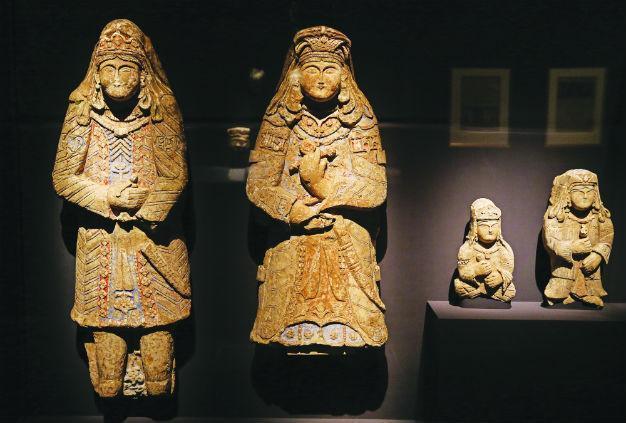The Great Age of Seljuks shown at Met Museum
NEW YORK

AA photo
One of the most productive periods in the history of the region from Iran to Anatolia in modern Turkey corresponds to the rule of the Seljuks and their immediate successors, from 1038 to 1307.New York’s Metropolitan Museum of Art is hosting a landmark international loan exhibition titled “Court and Cosmos: The Great Age of the Seljuks” featuring spectacular works of art created in the 11th through 13th century from Turkmenistan to the Mediterranean.
Curated by Sheila Canby, Deniz Beyazıt, and Martina Rugiadi, approximately 270 objects, including ceramics, glass, stucco, works on paper, woodwork, textiles and metalwork from American, European and Middle Eastern public and private collections are shown in the exhibition. Many of the institutions had never lent works from their collections before.
Among the highlights are a dozen important loans from Turkmenistan, as the exhibition marks the first time that Turkmenistan as an independent country has permitted an extended loan of a group of historical objects to a museum in the U.S.
Arranged thematically, the exhibition opens with a display of artifacts that name the Seljuk sultans and members of the ruling elite. In Central Asia and Iran, inscriptions appeared on coins and architecture. Stucco reliefs representing royal guards, emirs, and courtiers serve to evoke the courts of the Seljuk rulers whose names did not appear on objects.
In Anatolia and Syria, the names of Seljuk successor rulers and images appeared on a range of objects. Here, the famous 12th-century cloisonné dish bearing the name of Rukn al-Dawla Dawud, a leader of the Artuqids, is featured.
In another section, the courtly environment and activities associated with the sultans and their courtiers appear on stucco reliefs, ceramics, metalwork and other objects.
The earliest extant manuscript of “The Shahnama” (The Book of Kings), the Persian national epic, created in Anatolia in 1217 is a highlight of the section.
The Seljuks actively promoted Sunni Islam throughout their territory, building madrasas and mosques and sponsoring the production of Qurans and other religious texts.
A number of rare and beautifully ornamented examples of book art from the time of the Seljuks are on view in the exhibition. In Syria and Anatolia, where the majority of the local population, including some of the ruling elite, was Christian, artifacts bearing Christian iconography continued to be made. And a ritual vessel from Georgia, with a Hebrew inscription, attests to the presence of Jewish populations as well.
The same artists often served various religious communities. Hence, the styles and artistic traditions of one group merged with those of another.
The final section of the exhibition focuses on the funerary arts. A variety of tomb markers, cenotaphs, funerary furniture and patterned textiles discovered in Seljuk tombs are shown. In a proper Muslim burial, the deceased is wrapped in two or three sheets of plain white cloth; the presence of expensive textiles in a funerary context indicates that popular customs and official practice differed significantly.
A projection of photographs of Seljuk architecture and landscapes by Henri Stierlin is also visible throughout the exhibition. Historical views of the domes of the Great Mosque at Isfahan, a UNESCO World Heritage Site, are projected on the ceiling of one area.
The exhibition will run through July 24 at the Iris and B. Gerald Cantor Exhibition Hall.
















